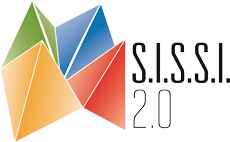Cosa comprendono le ricerche di mercato? Odpri
Ultima modifica: 20.01.2020
Una ricerca di mercato si svolge seguendo cinque passi fondamentali:
- Definizione del problema e degli obiettivi della ricerca
Nella ricerca di mercato, il primo passo è definire i problemi e gli obiettivi della stessa. L’azienda deve prestare attenzione e non definire il problema in termini troppo ampi o troppo limitati.
- Pianificazione della ricerca
Il secondo passo prevede la predisposizione di un piano di ricerca che comprenda le fonti dei dati, i metodi di ricerca, gli strumenti di ricerca, il piano di campionamento, le forme di comunicazione e i costi della ricerca.
- Raccolta di informazioni
Il terzo passo comprende la raccolta di informazioni: si tratta della parte più costosa di una ricerca di mercato e anche quella più esposta a eventuali errori. Con lo sviluppo dell’ICT, il processo di raccolta delle informazioni è diventato più semplice e meno costoso (es. codici a barre, questionari online).
- Analisi delle informazioni
Dai dati raccolti è necessario giungere a delle conclusioni. È compito del ricercatore ordinare i dati in tabelle e applicare diversi metodi statistici per giungere a conclusioni utili (distribuzione di frequenza, medie, misurazione della variabilità).
- Presentazione delle conclusioni e decisioni
Nella fase conclusiva di una ricerca di mercato il ricercatore deve presentare le conclusioni alla direzione aziendale. La ricerca aiuta la direzione a conoscere meglio il problema e a decidere rispetto a una situazione concreta in base ai dati ottenuti.
Il risultato finale di una ricerca di mercato è il piano di marketing.
Fonte: Kotler, P. 2004. Management trženja (Marketing management, 11. ed.). Ljubljana: GV Založba.




